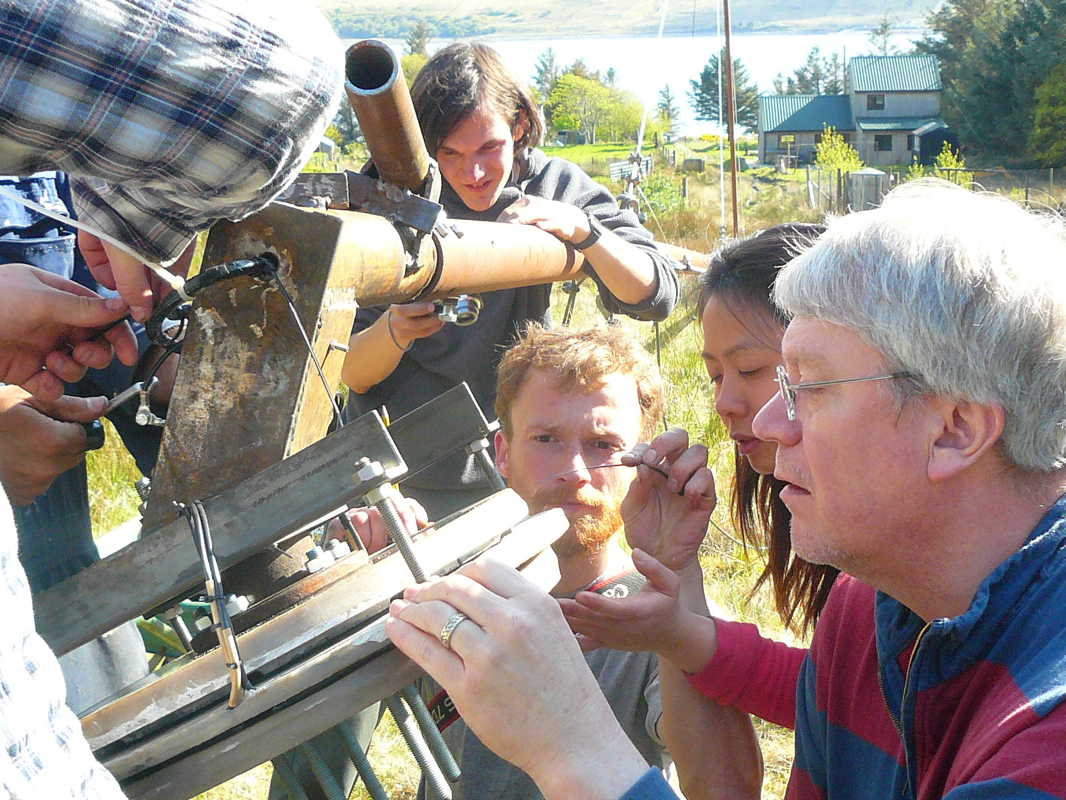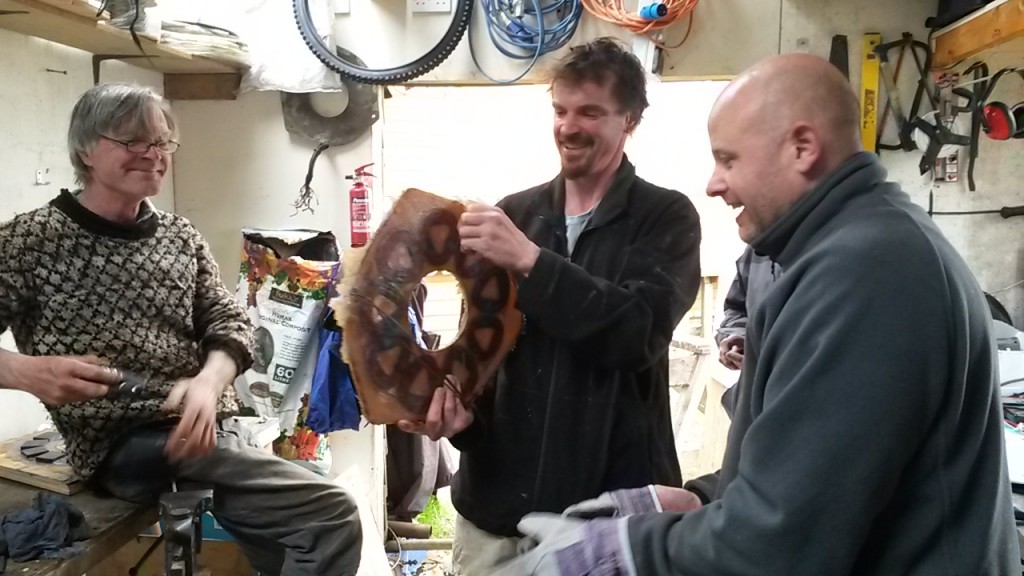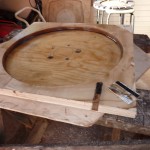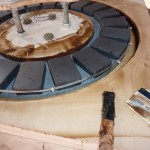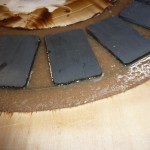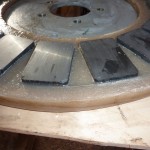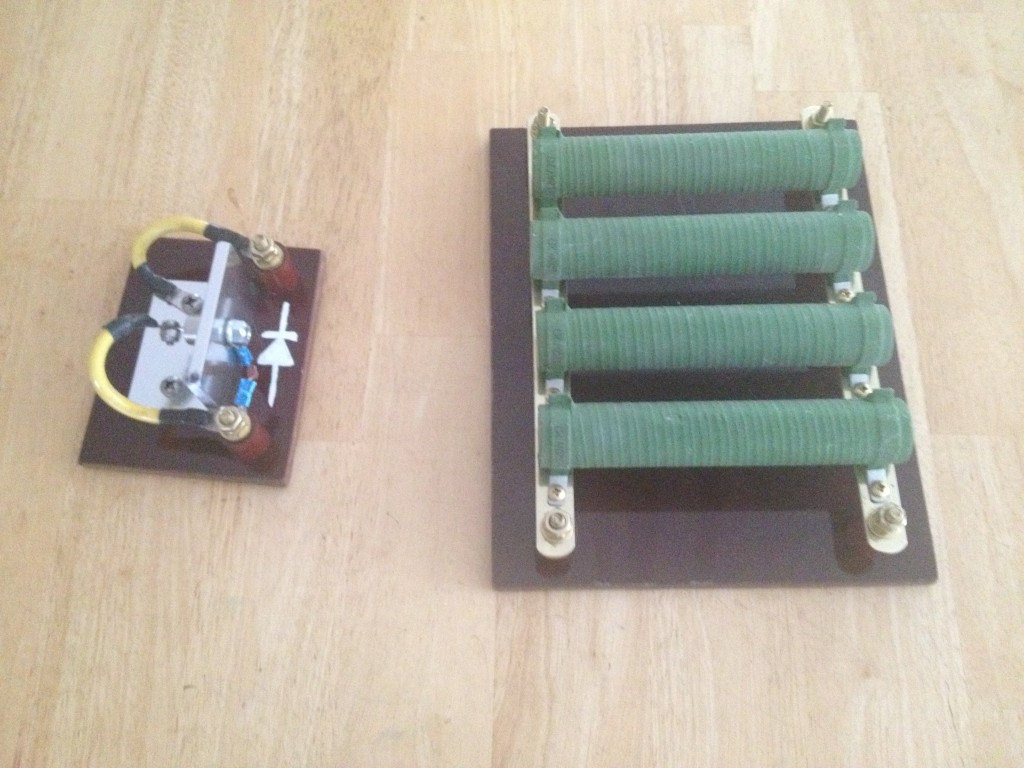I don’t write enough about what goes on here at home on Scoraig so here is a run down on where my electricity comes from. I have two windmills and a collection of solar PV panels. 800 Ah Rolls 4000-series battery and 48 V and two Outback VFX 3 kW inverters.
-
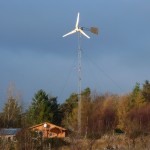
-
5.3 metre diameter
-
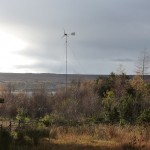
-
3.6 metre diameter
-
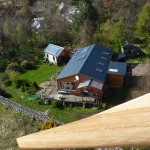
-
2.5 kWp of solar PV
-
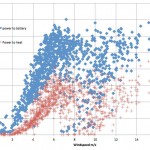
-
Big one Power curve
-
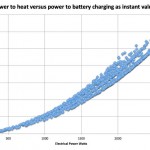
-
Big one heat v charge
The big windmill charges the 48 V battery via a couple of heaters in series. We get very little heat in low winds but almost all of the power goes to battery charging with very low cut-in around 60 rpm. As the current increases to (say) 20 A we get about 1000 W to the battery and 300 W of heat. When it reaches 40 A we get 2400 W at the battery (assuming 60V) and 1200 W of heat. The heat (combined with waste heat from cooking) is sufficient for our well insulated house most of the time. I prefer the windmill should not go a lot higher output than that, but it’s turbulent site in NW gales so we do see much higher surge outputs and there is trip that brings in extra heaters as a braking load when the voltage reaches 140 V (7.5 kW). I had a bad accident with this windmill (tower buckling) in a bad storm last January, and nowadays it is governed to about 1 kW average into the battery. It looks lazy but it does all we need.
The smaller windmill is an AWP from Zimbabwe but the blades are locally made from wood. It runs through an MPPT controller (I have tested both Classic and Tristar) that enhances the peak output to about 1500 watts.
The Solar array consists of 4 strings (pairs) of big 240 Wp 30 V modules and 2 strings (fours) of little 80 Wp 17 V modules totalling about 2.5 kWp. These feed into the battery, and surplus power (wind and solar) is dumped to hot water using a Tristar PWM diversion load controller. When the water tank is hot, the excess power is diverted to AC heating loads using a phase control SSR. We also have some evacuated tubes for hot water.
Electricity consumption is running at about 6500 kWh per year. (The UK domestic average is 4200 but I also run my business and the extended family house next door). We do most of our cooking with electricity, using a kettle, toaster, microwave, induction hob and halogen oven. We also recently replaced the gas oven with a big electric oven.
When the wind stops and there is not much sunlight the batteries get a bit of a fright, and I have to fire up a diesel generator. This has run for an average of 150 hours per year over the last two years, feeding about 2-3 kW of power into the system.



